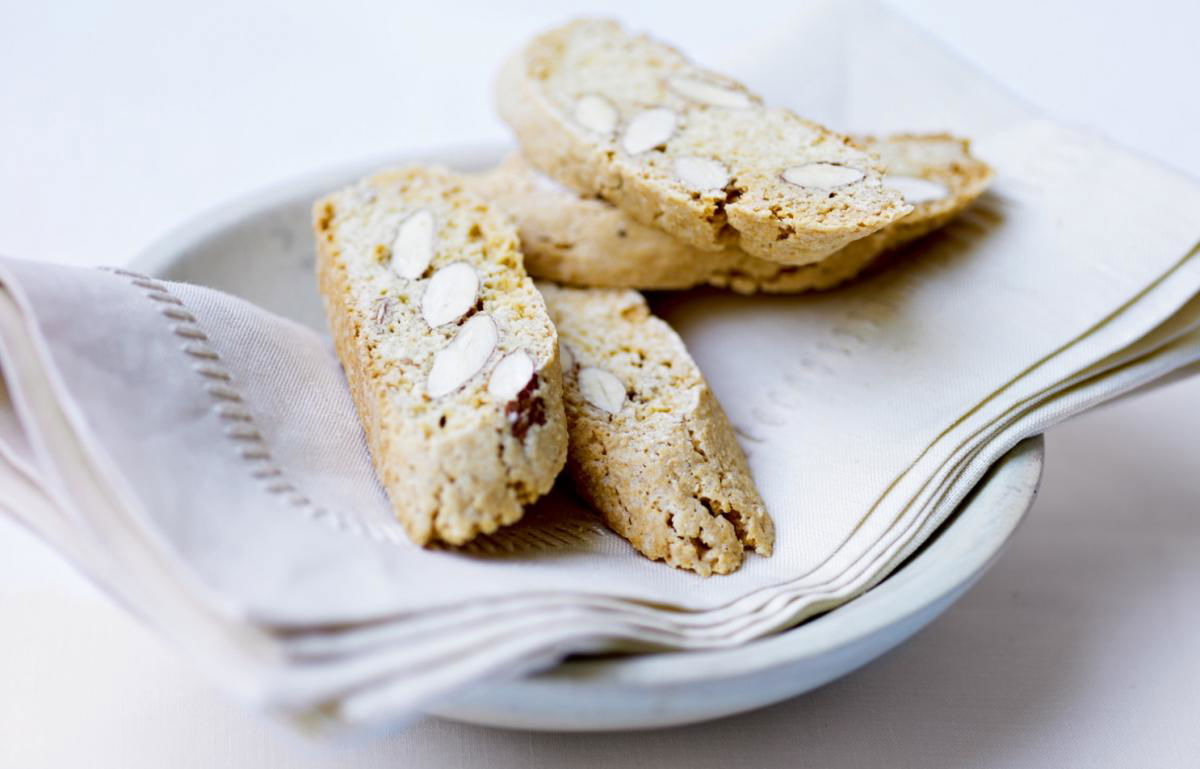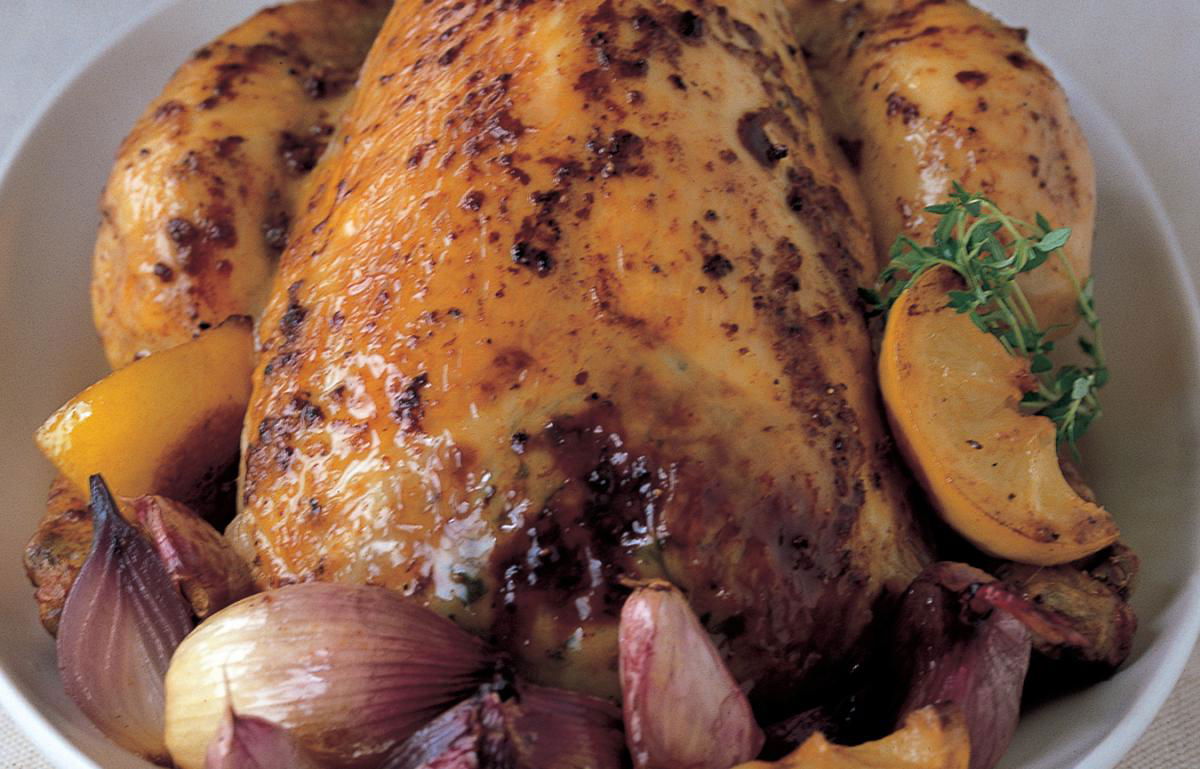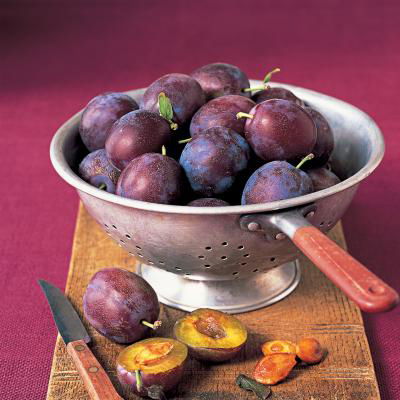


I have a small Victoria plum tree in my garden in Suffolk, and I love eating them straight from the tree in late summer, giving them a faint squeeze to see which ones are fully ripe, then eating just a few each day for breakfast and lunch until they’re all gone.
There are several other varieties of home-grown plums, all suitable for cooking or eating raw when fully ripe. Greengages, because of their colour, are deceptive – they can look unripe and forbidding but taste very sweet. I like to cook both greengages and plums in a compote of Marsala wine - see recipe below. Damsons are my favourite members of the plum family. The true damson is small and oval, almost almond-shaped, with dark indigo-purple skin, covered in a soft bloom and bright-green, sharp-sour flesh that when cooked with sugar, produces darker, reddish-purple juice. The secret of the damson’s utter charm is that because it’s a sharp fruit its flavour is not killed by sugar, so damson jam remains perfectly tart and not over-sweet. One of my all-time favourite recipes is for Damson Chutney: in over 30 years I've never been without a little hoard of it stashed away in my cupboard under the stairs. It does wonders for bangers or makes a very sophisticated accompaniment to cold cuts, and I particularly love serving sausages with jacket potatoes and dipping the potato skins in a luscious pile of damson chutney.
Follow us Like us on Facebook Follow us on twitter Follow us on instagram Follow us on pinterest Follow us on youtube
© 2001-2024 All Rights Reserved Delia Online